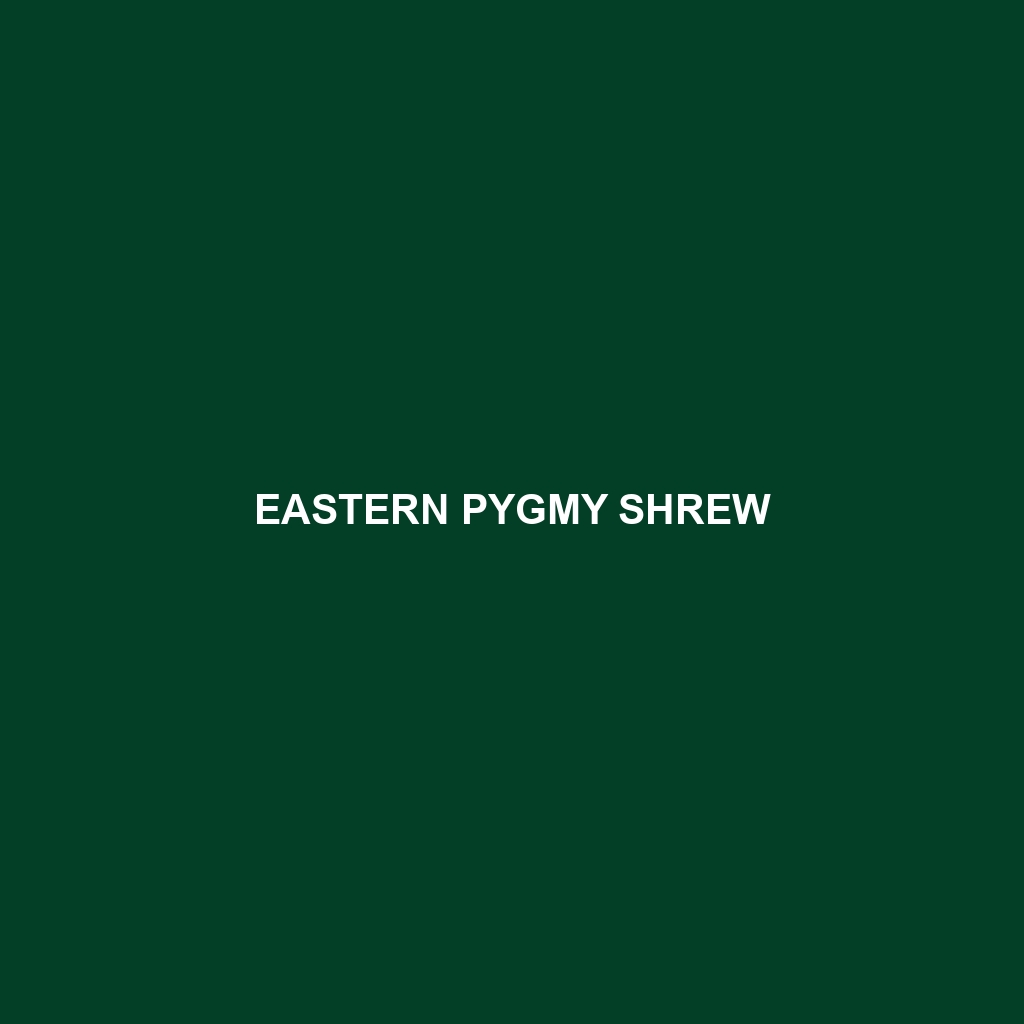Eastern Pygmy Shrew
Common Name: Eastern Pygmy Shrew
Scientific Name: Sorex hoyi
Habitat: The Eastern Pygmy Shrew is primarily found in North America, particularly in the eastern regions of the United States and Canada. It thrives in diverse environments, including moist woodlands, grassy meadows, and wetlands. This small mammal favors areas with dense vegetation that provides ample cover and abundant food sources.
Physical Characteristics: The Eastern Pygmy Shrew is one of the smallest mammals, measuring only 2.4 to 3.5 inches in length, excluding the tail. Its fur is generally a dark brown or grayish color on the back and lighter on the belly. The shrew possesses a pointed snout and small eyes, with a streamlined body shape that is well-adapted for burrowing and navigating through dense underbrush. Notable features include its long, slender tail, which aids in balance when moving through its habitat.
Behavior: Eastern Pygmy Shrews are known for their high metabolism and energetic behavior. They are primarily nocturnal, often foraging for food at night. These shrews are territorial and may display aggressive behavior to defend their homes from intruders. Notably, they communicate through ultrasonic sounds, which are inaudible to humans but play an essential role in their social interactions.
Diet: The diet of the Eastern Pygmy Shrew is primarily insectivorous, consisting of a variety of insects, spiders, and other invertebrates. They may also consume small invertebrates and occasionally fruits or seeds during the warmer months. Their feeding habits reflect their role as predators in the ecosystem, controlling insect populations and contributing to soil health through their foraging activities.
Reproduction: The breeding season for Eastern Pygmy Shrews typically occurs in late spring and early summer. Females can produce multiple litters each year, usually consisting of 3 to 7 offspring. After a gestation period of about three weeks, the young are born blind and helpless but grow rapidly, becoming independent within a few weeks. Maternal care is crucial, as mothers provide warmth and protection to their young until they are ready to venture out on their own.
Conservation Status: The Eastern Pygmy Shrew is currently classified as Least Concern by the IUCN, indicating stable populations and a broad distribution. However, habitat destruction and climate change pose potential threats to its long-term survival. Conservation efforts focusing on habitat preservation are essential for maintaining healthy populations of this species.
Interesting Facts: One fascinating aspect of the Eastern Pygmy Shrew is its incredible metabolism; it requires a significant amount of food relative to its body weight, consuming about twice its body weight daily. This tiny mammal also has a lifespan of only about 1 to 2 years in the wild, making its rapid reproduction critical for sustaining its population.
Role in Ecosystem: Eastern Pygmy Shrews play a vital role in their ecosystems as insectivores. By preying on various insects and invertebrates, they help regulate these populations, contributing to a balanced ecosystem. Additionally, their foraging activities aerate the soil, promoting plant growth and overall habitat health. Their presence indicates a healthy ecosystem, as they require specific environmental conditions to thrive.
